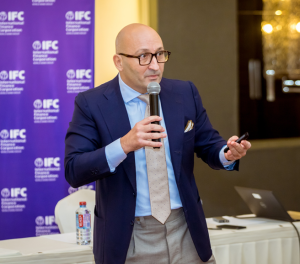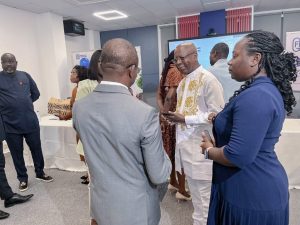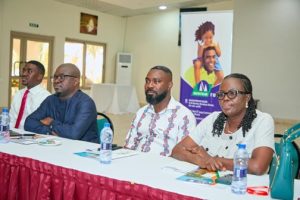
Two rocks, believed to have been carved in the 500 BC by Ndewura Sumaila Jakpa, the founder of Gonjaland, and feature what appear to be Kufic/ Arabic inscriptions had been discovered in the Akamade area of the Klor Traditional Area located within the East Gonja Municipality.
It was discovered on August 26, 2025, by the Director, Tourism Investment Solution, Ms Zubaida Ismail, during their project in the Savannah Region to profile tourism sites, intending to showcase to the world and also boost the industry globally.
The School of Arts, Department of Archaeology and Heritage Studies of the University of Ghana has been consulted to study and provide their findings, with the hope that the rock could be added to our heritage for local and international viewing.
The Ministry of Tourism, Culture, and Creative Arts, the Ghana Tourism Development Company Limited, and other relevant organisations had been informed while a search for an Islamic cleric to read and translate the inscriptions was also underway.
In an interview with The Ghanaian Times yesterday in Accra, Ms Ismail said the inscriptions on the rock had to be confirmed to be truly Arabic writings, and translate the message that was left for Ghanaians and the people of Gonjaland.
“Then we can now profile it as our discovery, and add it to our heritage as Ghanaian people. So I am in Accra right now, and we are almost done with the necessary arrangements to visit the site with the archaeologists from the faculty at the University of Ghana.
We are currently planning the trip with the Chief Executive Officer of the Ghana Tourism Development Company, Professor Kobby Mensah, Chief Executive Officer of the East Gonja and players in the tourism industry to officially visit the sites and commence the archaeological process,” she explained.
The Dean of the School of Arts, Department of Archaeology and Heritage Studies of the University of Ghana, Professor Wazi Apoh, in his preliminary comments, said, the sites could have been used throughout the Iron Age (from approximately 500 BC and through the days of enslavement, including periods of Ndewura).
“The rock art find is great. Not yet sure if it is Arabic/Islamic. This trip will be enlightening. If indeed it is then it could be in the realms of Kufic inscriptions.
They are undoubtedly rock art. We will study the mode of crafting. I am excited about the potential of these significant finds for the communities in the area.” Professor Apoh stated.
The Chief Executive Officer of the Ghana Tourism Development Company, Professor Kobby Mensah, added that he was excited about the expedition to find out if the rock was what was actually believed to be.
“I am excited about this expedition because I think we are in for a big find in the Savannah Region. Zubaida has always been a hardworking and daring person, and I am not surprised she discovered something like this,” he underlined.
Kufic inscriptions are texts written in Kufic script, an early, angular, and geometric style of Arabic calligraphy originating from the city of Kufa in Iraq during the 7th century.
These inscriptions are found on various objects, including religious manuscripts like the Quran, architectural facades, coins, and tombs, serving as a foundational element of early Islamic art and architecture.
BY BERNARD BENGHAN
???? Follow Ghanaian Times WhatsApp Channel today. https://whatsapp.com/channel/0029VbAjG7g3gvWajUAEX12Q
???? Trusted News. Real Stories. Anytime, Anywhere.

The post 2 rocks carved in 500 BC by Jakpa discovered appeared first on Ghanaian Times.
Read Full Story




















Facebook
Twitter
Pinterest
Instagram
Google+
YouTube
LinkedIn
RSS